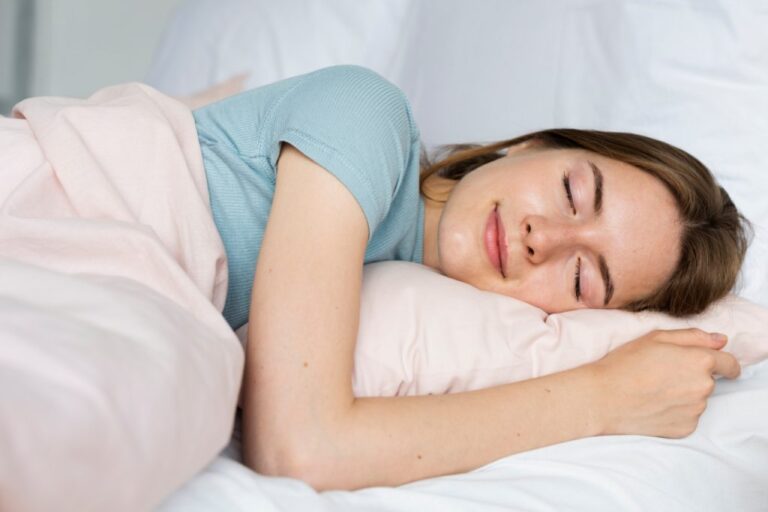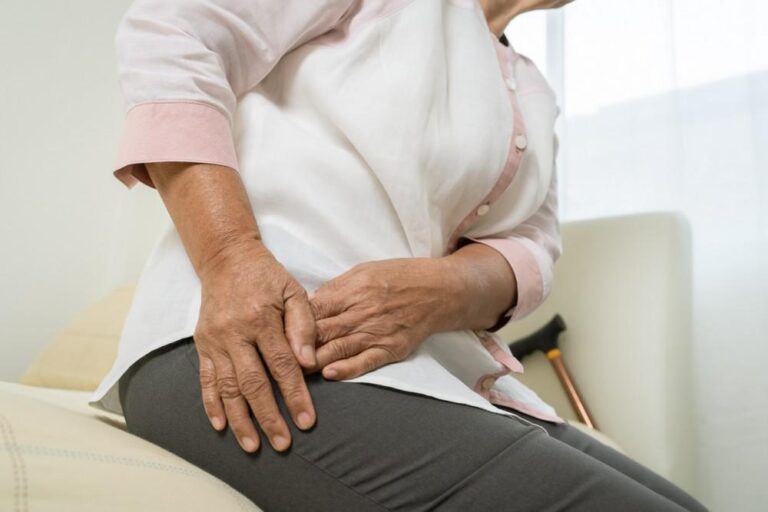It can seem nearly difficult to get a restful night’s sleep when you suffer hip pain. There may be a technique to fall asleep more quickly and stay asleep for a longer period of time, regardless of your sleeping position or underlying health concern.
You might have trouble falling asleep for a number of reasons. One of them shouldn’t be hip discomfort. Nonetheless, more than one-third of American adults claim that foot, knee, or hip pain hinders them from sleeping.

HIP PAIN ONLY AT NIGHT
If your hip pain only occurs at night, your sleeping position or mattress is probably to blame. Because to pressure on the hip joint, side sleepers are particularly prone to hip pain. If the other hip stretches forward, the hip you are not lying on can also hurt. The ideal remedy? Sleep on your back. If switching positions during the night is difficult for you, try placing a pillow between your knees or just behind your back to reduce pressure and maintain the alignment of your hips. Another option is a mattress topper or a more supportive mattress.
POPULAR REASONS FOR HIP DISCOMFORT AT NIGHT
Many diseases can lead to hip pain during the night. The most typical examples are :
- Osteoarthritis with Bursitis (OA)
- Sciatica-piriformis syndrome tendonitis
- Your sleeping position, your mattress, your pillows, or being pregnant can all contribute to it. It’s also possible that your hip discomfort is caused by another issue, such as lower back pain. It’s known as referred pain.
1. Sleeping Posture
Hip pain that frequently wakes you up at night may be caused by how you’re sleeping or your bedding. Pressure points could be triggered by an uncomfortable mattress, which could result in a hurting hip. The way you sleep can also hurt. In order to keep your hips straight, try sleeping on your back or, if you prefer to sleep on your side, sleep on the side that doesn’t pain.
2. Osteoarthritis
Osteoarthritis (OA), the most prevalent type of arthritis, can hurt your glutes, thighs, or groin. After extended durations of sitting or in the morning, it is typically worse. Although it is often associated with elderly people, OA can afflict adults of virtually any age and is not a necessary element of aging. At any age, physical activity is essential to reducing pain and enhancing mobility. Massage and acupuncture have also been proven to be beneficial. The first line of treatment for OA is a topical nonsteroidal anti-inflammatory drug (NSAID), according to the American College of Rheumatology (ACR). Try using it just before going to bed. If you are over 65, try to avoid using oral NSAIDs like ibuprofen and naproxen because they raise your risk of intestinal bleeding, heart attack, and stroke.
3. Bursitis
Little, fluid-filled sacs called bursa are dispersed all over the body and aid in reducing friction between soft tissue and bone. Bursitis is the term for inflammation of one of these sacs. There are two in your hip: the greater trochanter on the bony tip of the hip bone, and the iliopsoas bursa on the inside of the hip. Both can develop inflammation, but trochanteric bursitis is more frequent. It might follow from :
- Excessive use of sports like jogging, stair climbing, or cycling
- Low back arthritis or rheumatoid arthritis
- Hip damage
- Hip replacement or hip surgery
Reduce your intensity of exercise for about a week and use cold packs intermittently for the first 72 hours if you have an overuse injury. In most other circumstances, it’s critical to strengthen the muscles surrounding your hip joint through exercise or physical therapy. For more prolonged comfort, hot packs are advised. Bursitis discomfort that is worse at night can be relieved with hot and cold packs. If you take NSAIDs, use them for the shortest amount of time at the lowest dose.
4. Strained hip flexors
Any injury to the hip flexor muscles, which connect the femur, or thigh bone, to your lower back, hips, and groin, falls under this category. Pain, edema, weakness, and restricted movement can result from overusing or overstretching these muscles.
Your doctor might initially advise elevating and cooling the injured limb. You’ll also need to change your exercise regimen, but keep it. Hip flexors can be strengthened and stabilized with the aid of physical therapy. Exercises for the hips and buttocks assist prevent these injuries by maintaining the hips’ flexibility and openness. Take a warm bath, then stretch before bed for better sleep.

5. Tendinopathy in the glutes
Tendons are substantial bands of tissue that join bones to muscles. The tendons that attach your glutes to your hip bone are affected by gluteal tendinopathy. These tendons may rupture or disintegrate as a result of excessive use, chronic stress, and drugs including ciprofloxacin (Cipro), an antibiotic, and corticosteroids. Although commonly referred to as “tendinitis,” the most accurate term for these disorders is “tendinosis” because the majority of tendon injuries don’t include inflammation.
The way that gluteal tendinopathy is treated has also altered. In the past, doctors would advise rest and corticosteroid injections. The use of “eccentric exercise,” typically under the supervision of a physical therapist, is advised because anti-inflammatory medications like steroids and NSAIDs may impede healing.
Stretching, sleeping with a pillow between your knees, applying heat packs, and losing weight are examples of at-home treatments. It can take three to six months for tendon damage to heal.
It’s crucial to collaborate with your doctor to create a treatment plan because not getting enough sleep might exacerbate your pain. See your doctor at Specialty Care Clinics if your hip discomfort is frequently keeping you up at night or preventing you from falling asleep. Call us now at (469) 545-9983.
